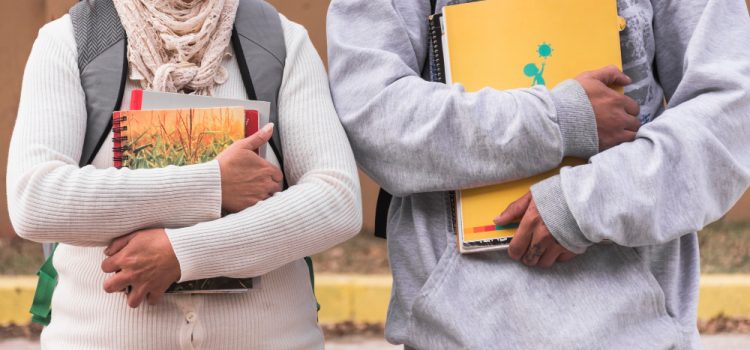
Introduction
In the vast realm of education, where diversity often meets adversity, Sarah Ahmed stands as a beacon of hope. With a teaching career spanning cultural divides, Sarah brings a unique perspective to the table. Her experience in navigating the complexities of Arab-Jewish relations positions her as a guide in the uncharted territory of fostering unity through emotional exchanges.
The Power of Emotional Bonds in Cultural Exchange
In the intricate tapestry of Arab-Jewish dynamics, emotional bonds serve as the invisible threads weaving a narrative of unity. Understanding this delicate dance between cultures requires delving into the historical nuances, challenges, and opportunities embedded in this unique educational landscape.
The Need for Intercultural Education
When Arab and Jewish children grow up separately, they often learn only one narrative. This can lead to misunderstanding and mistrust. Intercultural education seeks to change that by:
- Exposing students to multiple perspectives early on.
- Encouraging open dialogue about history, religion, and identity.
- Building social skills such as active listening and compromise.
By learning in a mixed environment, students develop empathy. They recognize shared hopes—like doing well in school or helping their families—and appreciate cultural differences as strengths rather than barriers.
School Models That Work
There are several successful models for Arab-Jewish schools:
- Integrated Schools: Classrooms mix Arab and Jewish students in every subject.
- Dual-Track Schools: Separate language tracks (Arabic and Hebrew) but shared activities and spaces.
- Co-Located Schools: Two schools share a campus, coming together for arts, sports, and special projects.
Each model has its own benefits. Integrated schools offer the deepest immersion in both cultures, while dual-track systems allow students to learn in their mother tongue yet still collaborate daily. Co-located campuses can ease communities into cooperation without immediate full integration.
Shared Curriculum and Language Learning
A key component of these schools is a shared curriculum that respects both cultures. Core subjects follow national standards, but additional content includes:
- History lessons covering Arab and Jewish perspectives on regional events.
- Language classes where every student studies both Arabic and Hebrew.
- Civic education that highlights democratic values and human rights.
Learning each other’s language builds practical communication skills and signals respect. Students who start with basic greetings can progress to reading folk tales, singing songs, and debating ideas across cultural lines.
Understanding Arab-Jewish Dynamics
1. Cultural Dynamics Unveiled: A Closer Look
To comprehend the present, one must unravel the threads of the past. Arab-Jewish relations carry the weight of history, from shared traditions to periods of conflict. Unveiling these dynamics becomes a crucial first step in fostering genuine understanding.
2. Challenges and Opportunities in Arab-Jewish School Connections
Schools, as microcosms of society, mirror both its struggles and its potential for change. Arab-Jewish school connections face challenges deeply rooted in historical mistrust. However, within these challenges lie opportunities for transformative growth and cross-cultural understanding.
The Role of Emotional Exchanges
1. Embracing Empathy: The Catalyst for Cross-Cultural Unity
At the heart of Arab-Jewish unity lies empathy. Emotional exchanges act as the catalyst for this empathy, allowing students to step into each other’s shoes and perceive the world through a shared lens of understanding.
2. Stories that Speak: How Shared Emotions Shape Lasting Connections
Real narratives breathe life into theories. Students, through shared emotional experiences, create lasting connections that surpass cultural boundaries. These stories echo the power of vulnerability in breaking down the walls that often divide us.
Real-Life Narratives
1. Voices from the Classroom: Students Share Transformative Experiences
The essence of unity lies in the voices of those directly impacted. Students from diverse backgrounds share their transformative experiences, highlighting the profound impact emotional exchanges have on personal and academic growth.

2. Teachers as Architects: Building Bridges Through Emotional Engagement
Educators, as architects of the learning environment, play a pivotal role. Their commitment to emotional engagement serves as the cornerstone for building bridges between cultures, fostering an inclusive and supportive atmosphere.
Expert Perspectives
1. Insights from Cultural Psychologists: The Science Behind Emotional Bonds
Delving into the psychological aspects, cultural psychologists shed light on the science behind emotional bonds. Understanding the intricacies of human connection equips educators with practical tools to facilitate cross-cultural unity.
2. Educational Leaders Speak: Nurturing Inclusivity in Diverse Classrooms
Leaders in education provide insights into effective strategies for nurturing inclusivity. From curriculum adaptations to community involvement, these leaders emphasize the importance of cultivating a supportive and understanding educational environment.
Visual Journey: Key Points Table
A Visual Recap: Essential Insights at a Glance
This visual table encapsulates the key points discussed in the article, providing readers with a quick reference to the essential concepts of Arab-Jewish cultural connections and the role of emotional exchanges in shaping these bonds.
| Heading | Key Points |
|---|---|
| Cultural Dynamics Unveiled | – Historical context of Arab-Jewish relations |
| – Current challenges and opportunities | |
| Embracing Empathy | – The role of empathy in cultural understanding |
| – Examples of successful emotional exchanges | |
| Voices from the Classroom | – Student testimonials on cross-cultural bonding |
| – Impact on personal and academic growth | |
| Insights from Cultural Psychologists | – Psychological aspects of emotional connections |
| – Practical tips for fostering emotional bonds | |
| A Visual Recap | – Key takeaways in a visual format |
| Breaking Down Barriers | – Comparative analysis of effective strategies |
| – Highlighting key features for unity |
Comparative Table: Cultivating Unity Key Features
Breaking Down Barriers: A Comparative Overview of Strategies
This comparative table offers a visual representation of key features in cultivating unity, comparing Arab-Jewish cultural connections to traditional approaches.
| Feature | Arab-Jewish Cultural Connections | Traditional Approaches |
|---|---|---|
| Emphasis on Emotional Intelligence | ✔ | ❌ |
| Student-Driven Initiatives | ✔ | ❌ |
| Inclusive Curriculum | ✔ | ❌ |
| Community Involvement | ✔ | ❌ |
| Ongoing Teacher Training | ✔ | ❌ |
Strategies for Sustainable Bonds
1. From Classroom to Community: Strategies for Fostering Long-Term Unity
The journey towards sustainable bonds extends beyond the classroom. Strategies encompass not only educational practices but also community involvement, ensuring a holistic approach to unity.
2. The Ripple Effect: How Emotional Bonds Extend Beyond School Walls
The impact of emotional exchanges ripples beyond the immediate school environment. Exploring how these bonds extend into the community emphasizes the potential for broader societal change.
Community Engagement and Support
True change requires the broader community:
- Parent-Teacher Associations: Joint groups that plan family events and volunteer activities.
- Local Partnerships: Collaboration with cultural centers, religious institutions, and NGOs for resources and guest speakers.
- Shared Celebrations: Inviting neighborhood residents to school festivals strengthens ties beyond the student body.
When parents and community leaders actively support the schools, students see that collaboration extends beyond campus walls into everyday life.
Measuring Success
Schools measure progress in various ways:
- Surveys on Attitudes: Regular questionnaires track changes in students’ tolerance and empathy.
- Academic Achievement: Monitoring test scores ensures integration does not harm learning outcomes.
- Attendance and Retention: High enrollment and low dropout rates signal satisfaction.
- Alumni Feedback: Graduates who choose careers in mixed settings indicate long-term impact.
Positive data guides continuous improvement and helps secure funding from governments and donors.
Conclusion
In conclusion, emotional exchanges prove to be the cornerstone of building lasting bonds between Arab and Jewish students. As we navigate through the intricacies of cultural dynamics, embrace empathy, and hear the stories of those directly impacted, it becomes evident that the journey towards unity is not only achievable but also transformative.










